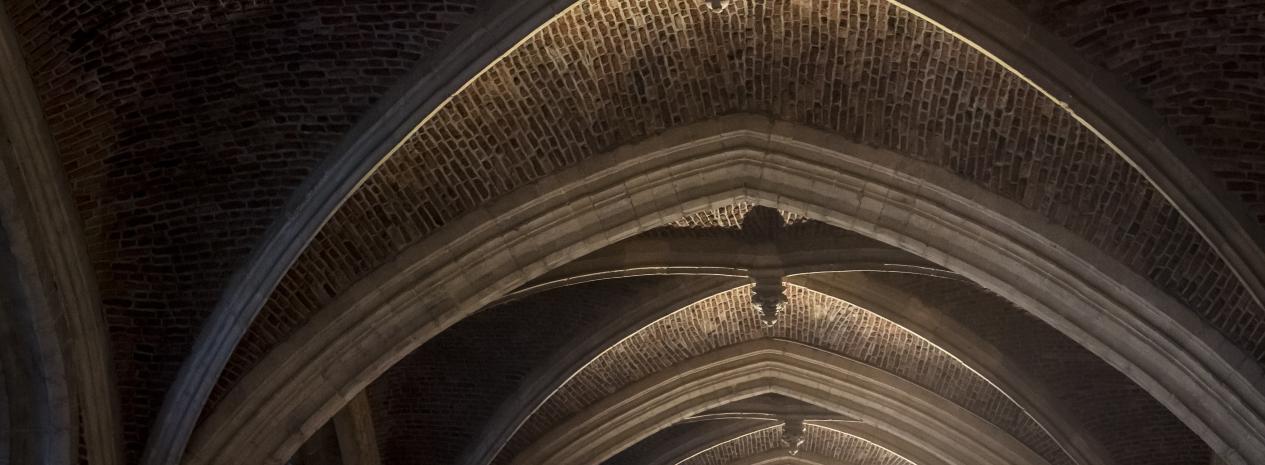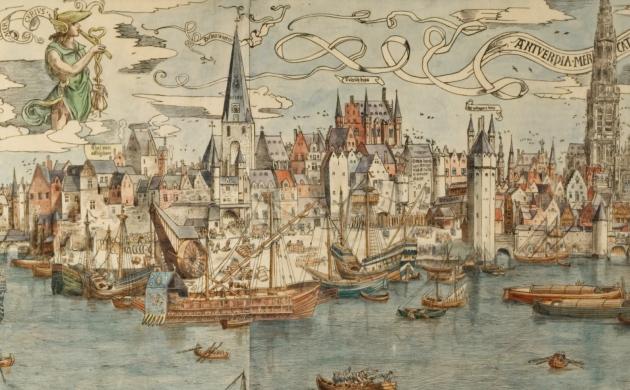In recent years, several urgent interventions had already been necessary pending the total restoration, including bracing the tip gables, reinforcing the truss structure, and installing nets against falling debris and temporary gutters. Penetrating moisture was affecting the joist heads for the iconic wooden roof cowl, causing the rafters and loft floors to begin to warp. The monument's wooden windows were also literally blown out of their frames during a storm.
Owing to the exponentially advancing damage situation and the urgently-needed structural work on the rafters, it is crucial that restoration work starts in the near future. The engineering office Origin Architecture & Engineering and FVWW architects, in collaboration with HP engineers, along with the city of Antwerp, Museum Vleeshuis and the Flanders Heritage Agency, went through an intensive process with various preliminary studies, including drawing up a management plan, a feasibility study and stability studies. The study process has resulted in a high-quality restoration file.
The restoration file was completed by the design team in 2024, and the permit was applied for, while the city started looking for a specialist contractor. If everything goes according to plan, the restoration works will be able to start in 2025. The restoration will cost an estimated €35 million.
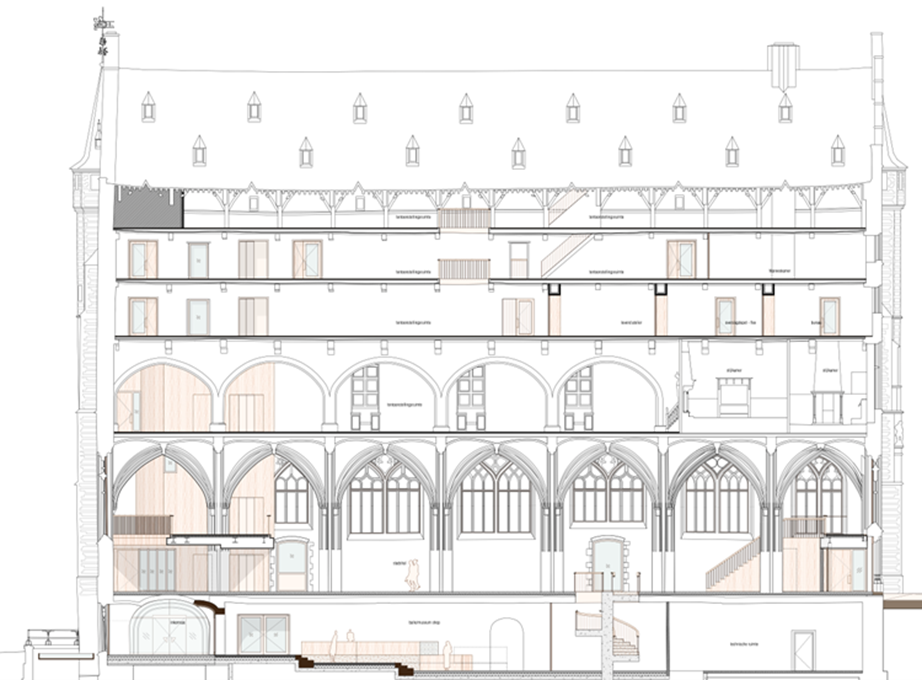
The restoration in 5 minutes
An overview of the main alterations
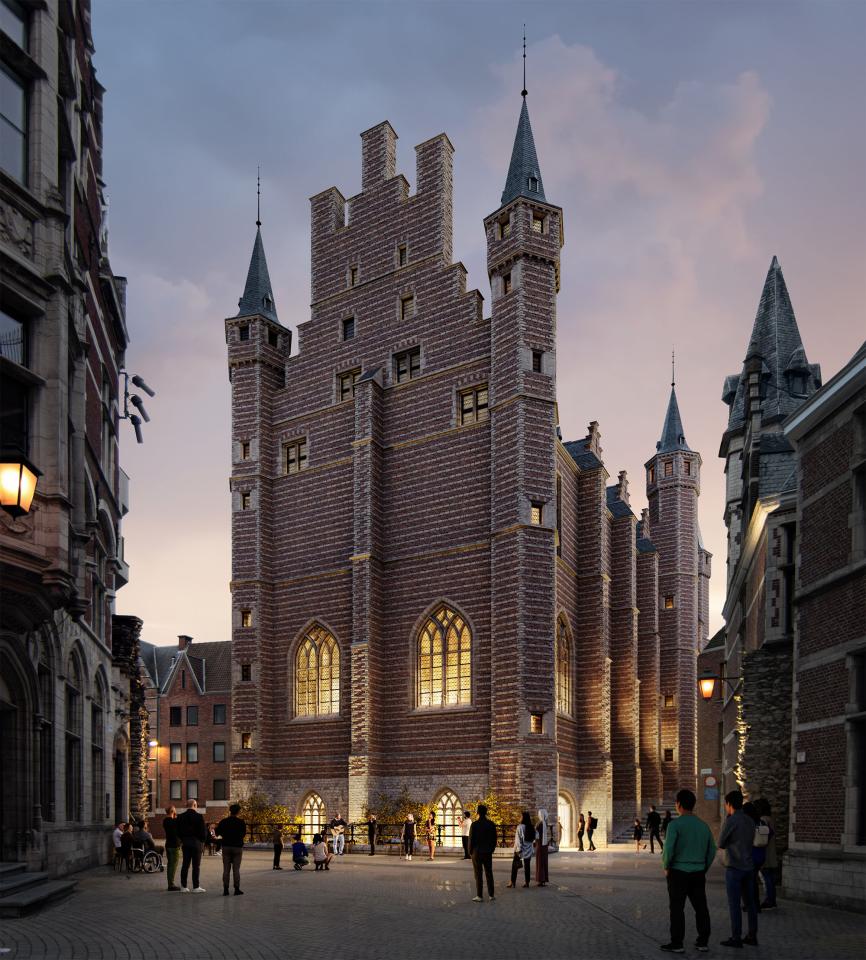
FVWW - Vleeshuis Antwerpen
The entrance
The Vleeshuis looks out along the west side onto Het Steen and the Scheldt, the cradle of Antwerp.
As such, the main entrance will be relocated to the Scheldt side, thereby ensuring easily visible and findable access to the monument and museum.
The new reception area, which includes a museum shop, offers museum visitors more comfort.

The 'City Hall'
The former butchers' market hall is a monumental space with cross vaults and stained glass windows. The permanent collection of musical instruments and objects is currently on display here. In the restored Vleeshuis, this hall will become even more the heart of the building. The 'City Hall' connects the street and the district to the monument. It will become a place where people gather for small concerts and open rehearsals (whether or not played on Museum Vleeshuis's unique collection of historical instruments), lectures, exhibitions and other cultural activities. Welcome events and receptions are also possible. It is a flexible and inviting space.
Visitors will enter the City Hall from the vaulted basement, via a new staircase or lift. Or from the street, via a crescent-shaped public platform and entrance lobby, on the east side.
Along three sides of the City Hall, there will be a mezzanine. On this mezzanine, visitors can admire the stained glass windows and vaults up close and get a wonderful view of the City Hall on the one hand and the city on the other. Masterpieces from the museum's collection will be safely displayed under the mezzanine.
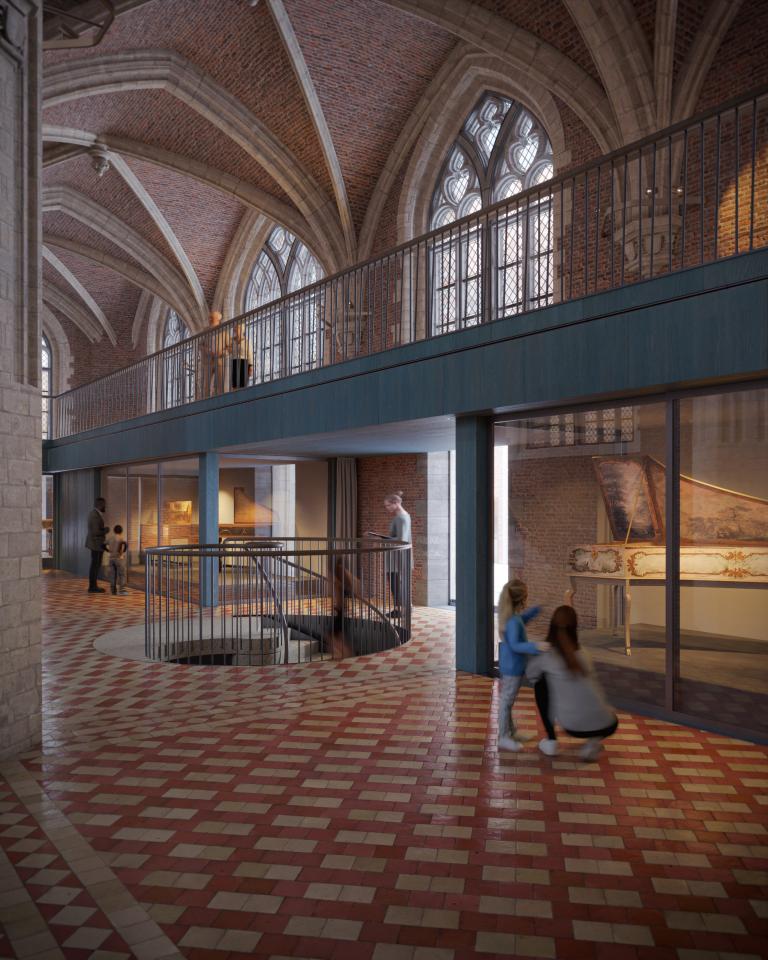
Simulatiebeeld interieur van de Grote Zaal © Joris Bourgeois
Ingenious staircase
The Vleeshuis has seven floors from the basement to the loft. After the restoration, they will all be open to the public. A new ingeniously designed staircase will wind artfully through the various floors. The staircase adapts its shape to the structure and character of the different building levels, as a declaration of love to the building. The barrel-vaulted basement is stony and dark. The City Hall on the ground floor is majestic, tall and filled with light. The first floor is more intimate, with round arches and three historic, protected period rooms. In the triple-height attic space, the huge wooden roof truss is the eye-catcher.
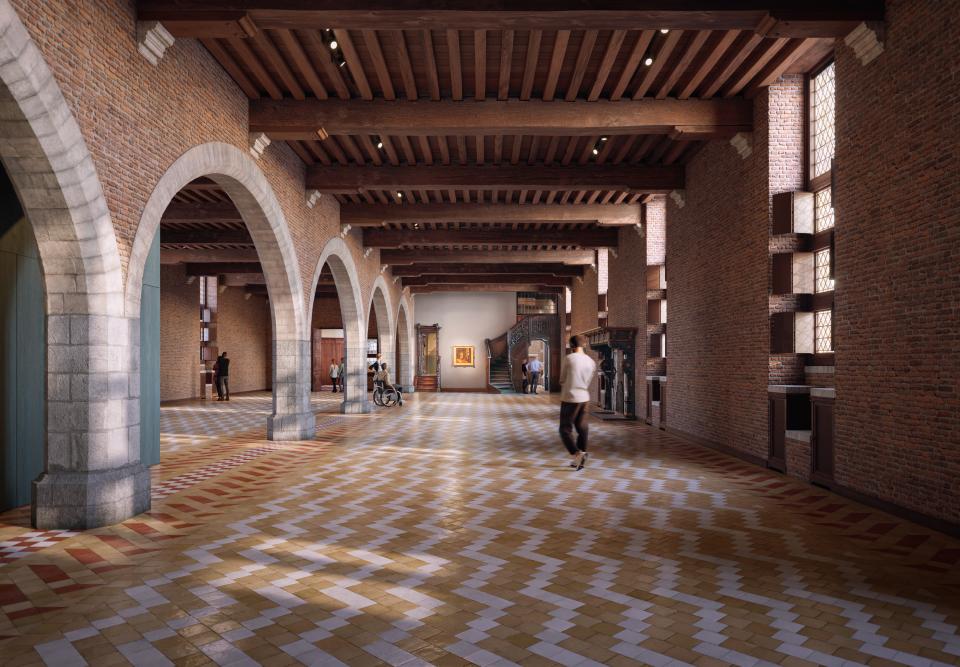
Revamped music museum
On the upper floors, the museum tells the story of 800 years of musical life in Antwerp and Flanders in an innovative way. In addition, there is once again a strong focus on the history of the monument itself, always with a link to the Vleeshuis district's musical past.
The first floor will be the core of the museum. This is where the most special, most fragile pieces will be on display. Here you will discover everything about musical life in Antwerp and Flanders over the centuries. With instruments, prints, scores, texts, models and sound, we will tell the stories of internationally renowned instrument makers, famous music printers and great musical stars. But also the stories of street singers, organ grinders, café pianists, collectors, etc. One by one, they have defined the soundtrack of Antwerp and Flanders for hundreds of years. Wannes Van de Velde's Work Room will have its permanent home here too. The presentation of our unique collection of historical musical instruments and objects has therefore been fully revamped, with more focus on an accessible experience, (musical) interaction and an offering tailored to different target groups. The first floor also features the three historic period rooms, created in 1913. One of these is a recreation of the old Council Chamber of the Butchers' Craft.
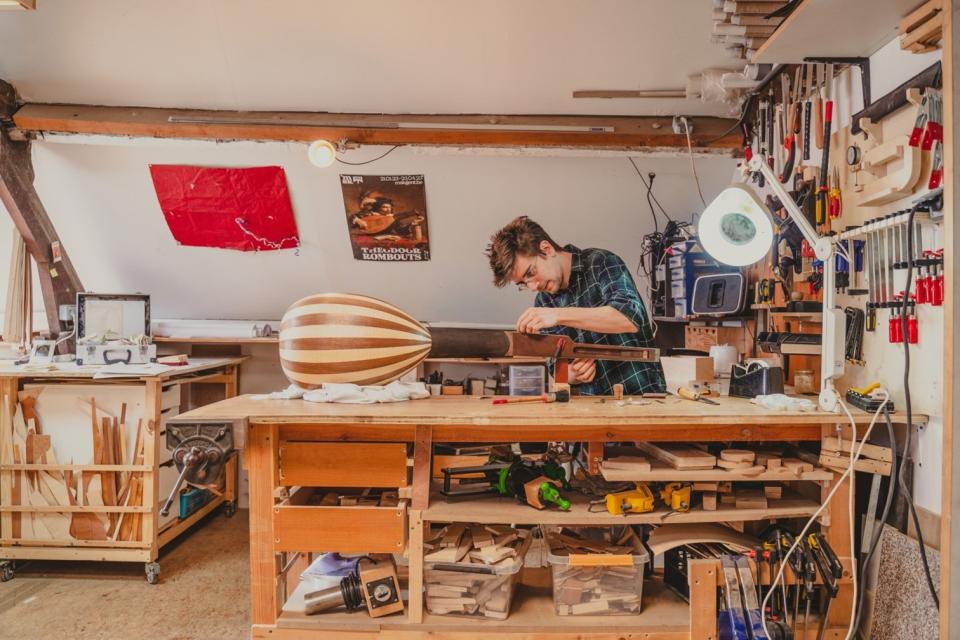
The second floor, which is the start of the huge roof structure, is referred to as the 'Work Floor'. In the Living Studio, instrument makers and restorers work their magic in front of visitors. And in the exhibition room, you will discover more about how instruments are made. This floor also houses the offices and a library for researchers.
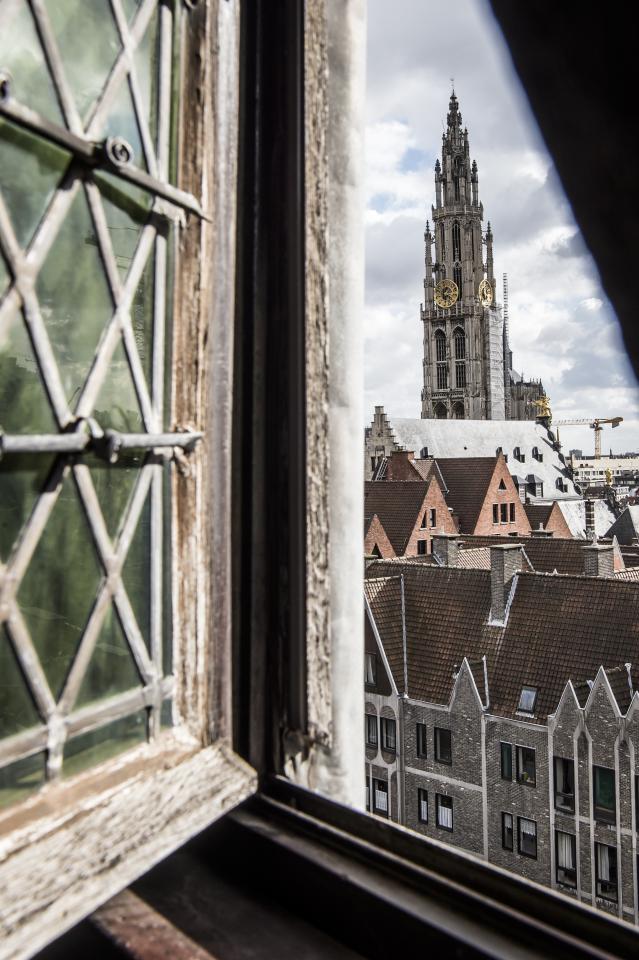
The third floor has space for temporary exhibitions, and we are also setting up an educational area for workshops, among other things. Various empty spaces will be restored, creating several superb views up and down, just as city architect Alexis van Mechelen intended back in 1913 when he designed the museum. At the very top on the fifth floor, you are at the highest point in the museum, right under the impressive roof truss. You will have climbed about 150 steps. This is about as close as you can get to the ridge of the roof.
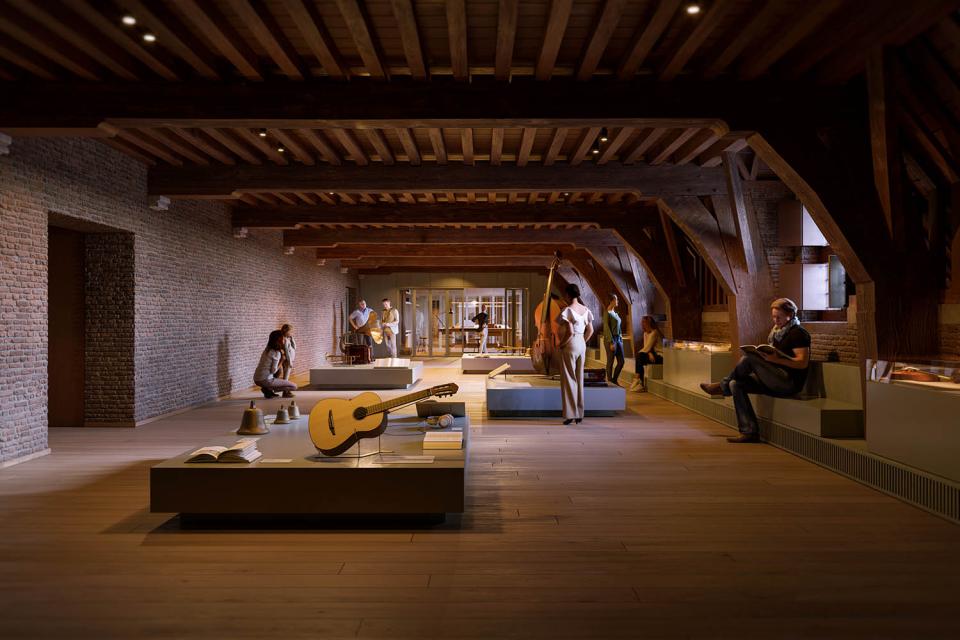
Simulatiebeeld tweede verdieping Vleeshuis ©Joris Bourgeois i.o.v Origin Architecture & Engineering i.s.m. FVWW Architecten
Engineering improvements
Finally, not only does the design take into account the preservation and restoration of the protected monument – several sustainable engineering improvements such as roof insulation, gutters and technologies for optimal air-conditioning will also be incorporated.
Maximum accessibility
New stairs and a lift will connect the floors and ensure the building is ready for more intensive future use. That way, as many people as possible can enjoy the monument. To preserve the view of the iconic exterior, the choice was made to integrate the lift and stairs on the inside of the building.
The staircase runs from the basement to the fifth floor, stopping at all seven floors. It takes different shapes, in order to pass around (and not through) historical beams. The lift shaft also starts in the basement, but stops on the third floor. This was a conscious decision, so that the lift shaft doesn't pierce the roof. Thanks to the lift, many more floors will be accessible than is currently the case for visitors with reduced mobility, namely five (-1 to +3) of the seven building floors. For individuals who have difficulty getting to the top two floors, we offer an alternative experience at +3.
About the Vleeshuis
Built in 1503, the Vleeshuis is a symbol of Antwerp's economic self-confidence and the flourishing of guilds at the start of a period often referred to as Antwerp's Golden Age. After the dissolution of guilds in 1795, the Vleeshuis was sold at auction. A collective of 29 members of the former butchers' guild repurchased the building and repurposed it as a meat market. The upper floors housed artists and an opera company, among other things. In 1841, the butchers sold the Vleeshuis to a wine merchant who used the immense building primarily for storage. The latter in turn sold the building to the city of Antwerp in 1899.
From 1904 to 1913, the Vleeshuis was completely restored by city architect Alexis Van Mechelen, to house a museum. In 2006, this museum evolved into Museum Vleeshuis | Sound of the City. Today, Museum Vleeshuis brings to life 800 years of Antwerp's musical culture, in the district where that music originated.
The Vleeshuis was protected as a monument in 1936, along with the City Hall, the Rubenshuis and the Hendrik Conscience Heritage Library, among others.


